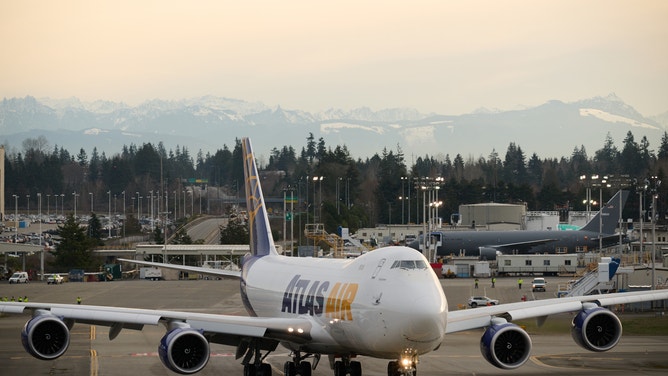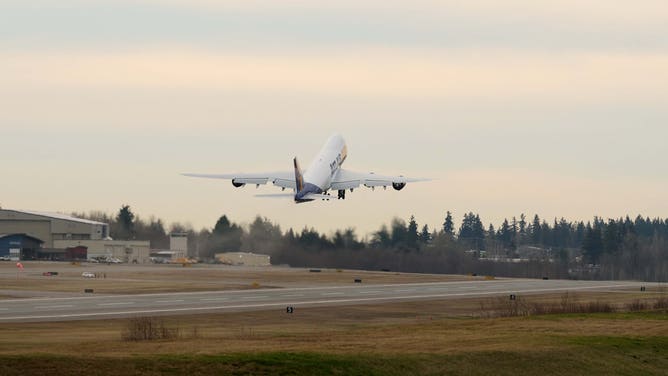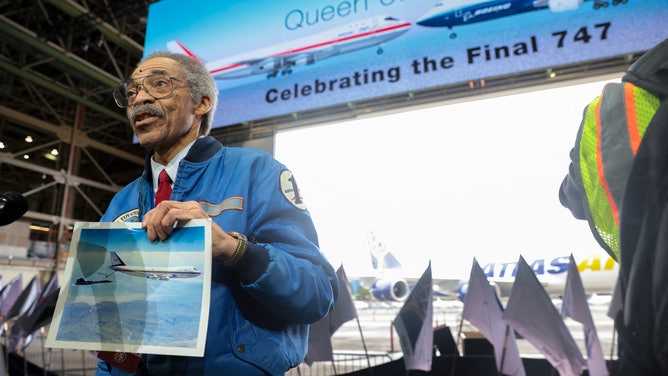Boeing's final 747 jumbo jet delivery takes artistic liberties in its flight to Cincinnati
The Atlas Air 747 took off from Boeing's factory in Everett, Washington, and to honor its final delivery flight, took a bit of a detour while over eastern Washington, drawing out a "747" inside a crown – a nod to its nickname as the "Queen of the Skies" – along its flight to Cincinnati.
Boeing's aerial tribute to the 'Queen of the Skies'
Boeing's final 747 delivery Wednesday honored the legacy by tracing a route over Eastern Washington that spelled '747'.
EVERETT, Wash. – Truly the end of an era, Boeing delivered its final 747 jet on Wednesday.
The plane took off from Boeing's factory in Everett, Washington, and to honor its final delivery flight, took a bit of a detour while over eastern Washington, drawing out a "747" inside a crown – a nod to its nickname as the "Queen of the Skies" – along its flight path to delivery to Atlas Air in Cincinnati.
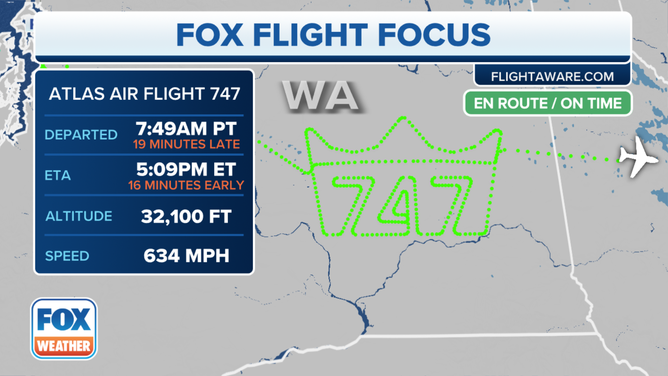
(FOX Weather)
The massive jet has been in service since 1969, popular for its capability to ferry several hundred passengers at a time around much of the globe without the need for refueling stops. It remains a stalwart of the air cargo industry, where it can easily carry nearly 250,000 pounds of freight over 5,000 miles.
"Of course, the iconic Air Force One aircraft are 747s that have been highly modified," pilot and meteorologist JP Dice told FOX Weather.
FAA IMPLEMENTS FUEL-SAVING CHANGES TO PLANES HEADED TO THESE SELECT AIRPORTS
But just how big is a cavernous 747? We did some math.
The interior has a volume of just over 31,000 cubic feet, according to Boeing. To put that in perspective, if 2 inches of snow fell on the football field at Chicago's Soldier Field, you could scoop up all the snow and shovel it into a 747 with room to spare.
Another fun fact about the 747's size: It can hold the equivalent of 1.5 million venti lattes.
And at 150 feet long, just the economy seating area of a 747-400 is large enough to fit the entire Wright Brothers' first flight at Kitty Hawk, North Carolina, in 1903, according to Boeing.
The 747 has 6 million parts and 171 miles of wiring, according to Boeing. Its tail height is the equivalent of a six-story building.
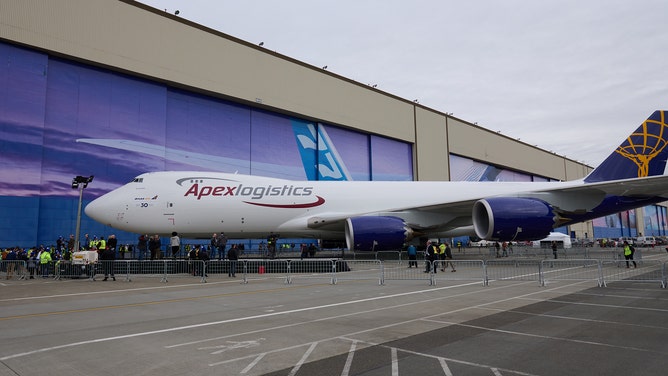
A Boeing 747 plane during an commemoration ceremony at the company's facility in Everett, Washington, US, on Tuesday, Jan. 31, 2023. Boeing Co. draws the curtain on the jumbo-jet era with final 747 delivery to Atlas Air. Photographer: Chona Kasinger/Bloomberg via Getty Images
(Getty Images)
The passenger version has ferried 3.5 billion people over 42 billion miles.
Newer planes can do more with less
But newer technology means planes can do more with less. The 747 is one of the last few planes to use four engines.
The rise of the lighter, more fuel-efficient two-engine 777s and 787s, which can still fly great distances on less fuel, has created a shift in the industry away from the jumbo jets.
DEVELOPMENT OF A FUEL-EFFICIENT JETLINER COULD SIGNIFICANTLY REDUCE EMISSIONS
"There was a time period when you needed four engines to produce as much thrust needed to do what a big airplane was going to be able to do," Dice said. "Now you’re looking (having) two engines that can produce as much thrust – or even more than four of the engines on the 747."
Boeing says its new 777-8 freighter can carry nearly as much as a 747-400, but while using 25% less fuel.
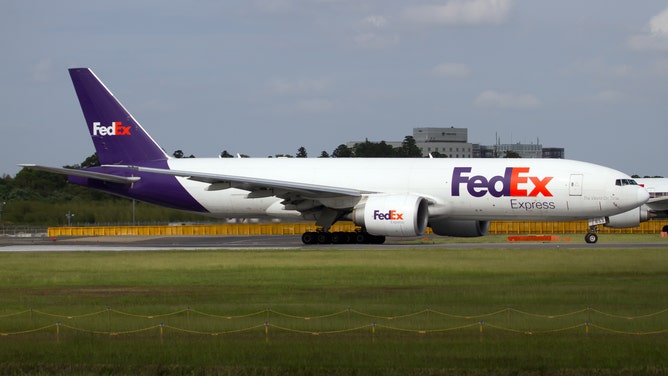
FedEx Boeing 777 freighter read to take off from Tokyo Narita airport.
(Fabrizio Gandolfo/SOPA Images/LightRocket / Getty Images)
"We’re always developing lighter aircraft, with more composites and more aerodynamic – it comes down to efficiency," Dice said.
But the current 747s in operation still have years of service life ahead, meaning the Queen of the Skies won't be ending her reign any time soon.
"Throughout history, this is still going to be one of the iconic airplanes that is still relevant today," Dice said. "It does a lot of things very well – it can handle cargo and a whole lot of weight."


